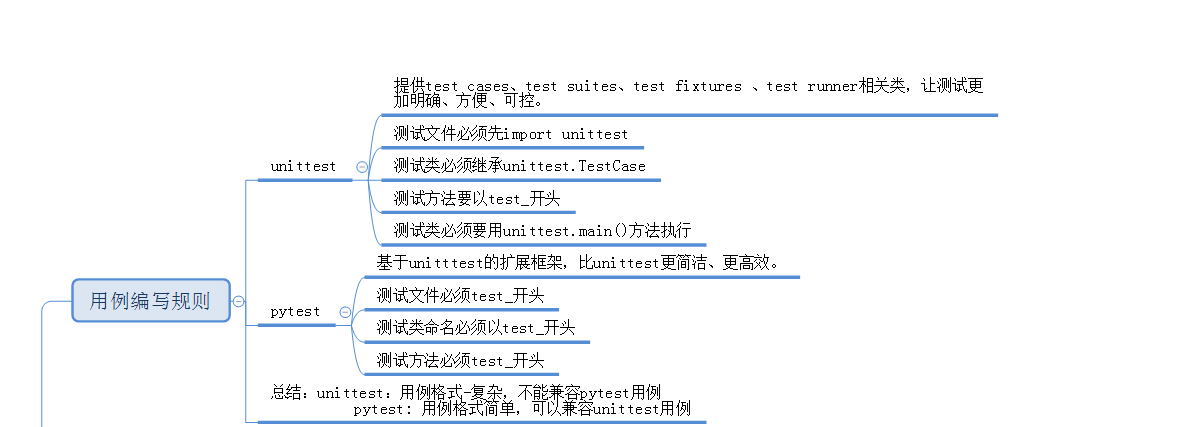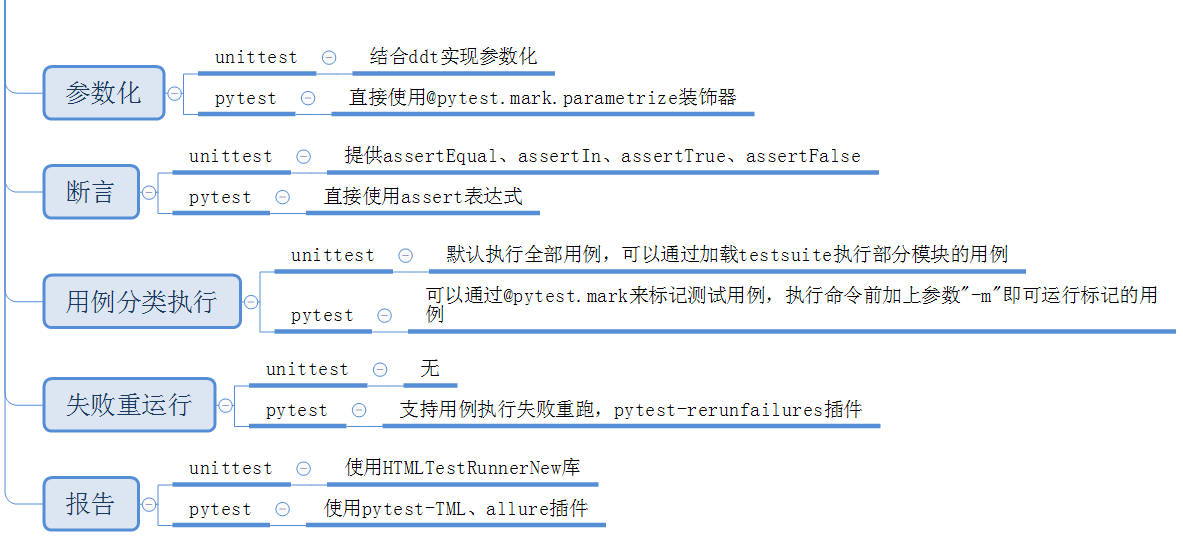python中pytest与unittest区别
转载
原文地址:
https://www.cnblogs.com/hp1991/p/11238559.html
https://www.cnblogs.com/cuitang/p/11635103.html



一、用例编写规则
1.unittest提供了test cases、test suites、test fixtures、test runner相关的类,让测试更加明确、方便、可控。使用unittest编写用例,必须遵守以下规则:
(1)测试文件必须先import unittest
(2)测试类必须继承unittest.TestCase
(3)测试方法必须以“test_”开头
(4)测试类必须要有unittest.main()方法
2.pytest是python的第三方测试框架,是基于unittest的扩展框架,比unittest更简洁,更高效。使用pytest编写用例,必须遵守以下规则:
(1)测试文件名必须以“test_”开头或者"_test"结尾(如:test_ab.py)
(2)测试方法必须以“test_”开头。
(3)测试类命名以"Test"开头。
总结: pytest可以执行unittest风格的测试用例,无须修改unittest用例的任何代码,有较好的兼容性。 pytest插件丰富,比如flask插件,可用于用例出错重跑;还有xdist插件,可用于设备并行执行。
二、用例前置和后置
1.unittest提供了setUp/tearDown,每个用例运行前、结束后运行一次。setUpClass和tearDownClass,用例执行前、结束后,只运行一次。
2.pytest提供了模块级、函数级、类级、方法级的setup/teardown,比unittest的setUp/tearDown更灵活。
-
模块级(setup_module/teardown_module)开始于模块始末,全局的
-
函数级(setup_function/teardown_function)只对函数用例生效(不在类中)
-
类级(setup_class/teardown_class)只在类中前后运行一次(在类中)
-
方法级(setup_method/teardown_method)开始于方法始末(在类中)
-
类里面的(setup/teardown)运行在调用方法的前后
pytest还可以在函数前加@pytest.fixture()装饰器,在测试用例中装在fixture函数。fixture的使用范围可以是function,module,class,session。
firture相对于setup和teardown来说有以下几点优势:
- 命名方式灵活,不局限于setup和teardown这几个命名
- conftest.py 配置里可以实现数据共享,不需要import就能自动找到一些配置,可供多个py文件调用。
- scope="module" 可以实现多个.py跨文件共享前置
- scope="session" 以实现多个.py跨文件使用一个session来完成多个用例
- 用yield来唤醒teardown的执行
三、断言
1.unittest提供了assertEqual、assertIn、assertTrue、assertFalse。
2.pytest直接使用assert 表达式。
四、报告
1.unittest使用HTMLTestRunnerNew库。
2.pytest有pytest-HTML、allure插件。
五、失败重跑
1、unittest无此功能。
2、pytest支持用例执行失败重跑,pytest-rerunfailures插件。
六、参数化
1、unittest需依赖ddt库,
2、pytest直接使用



